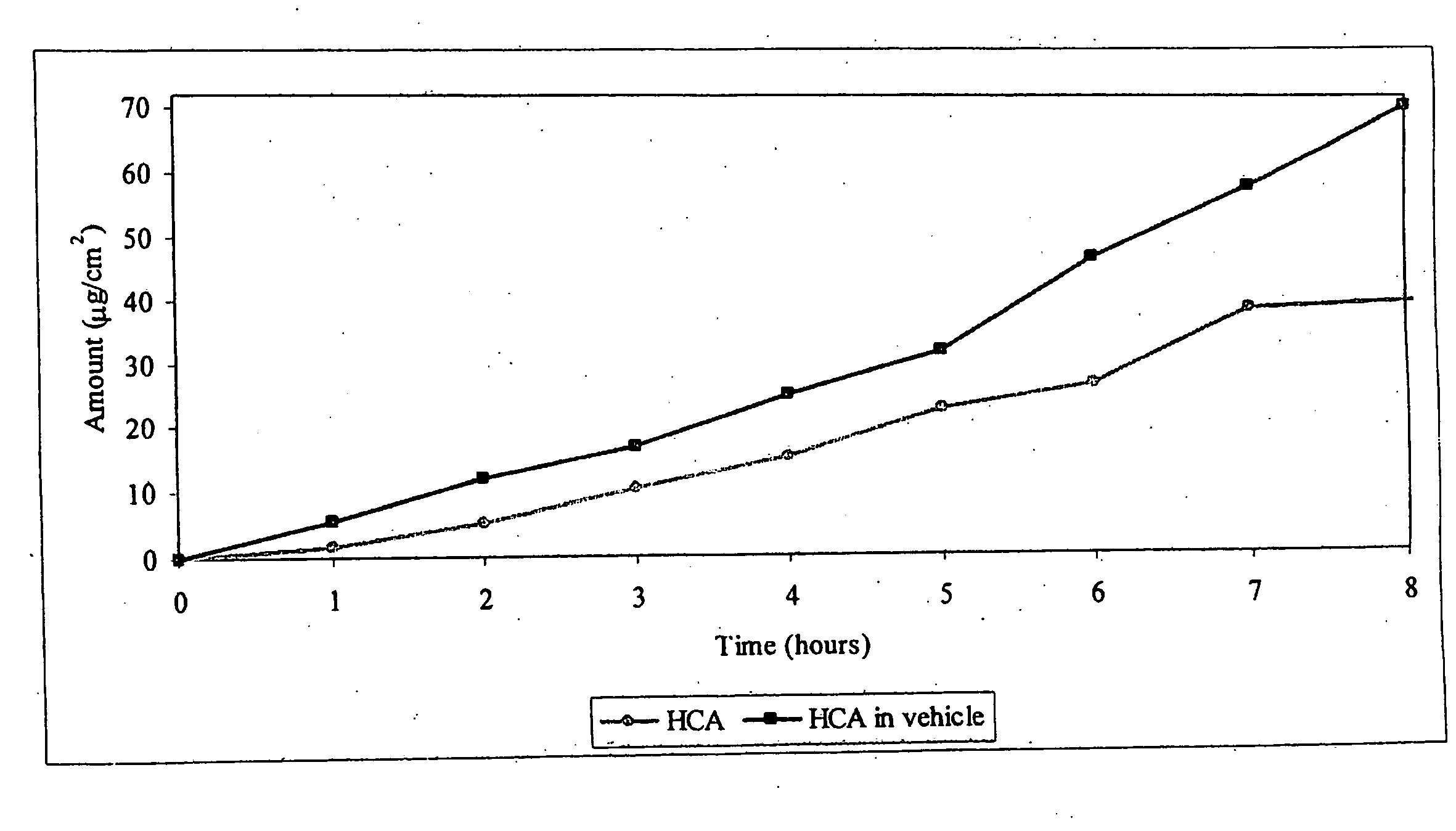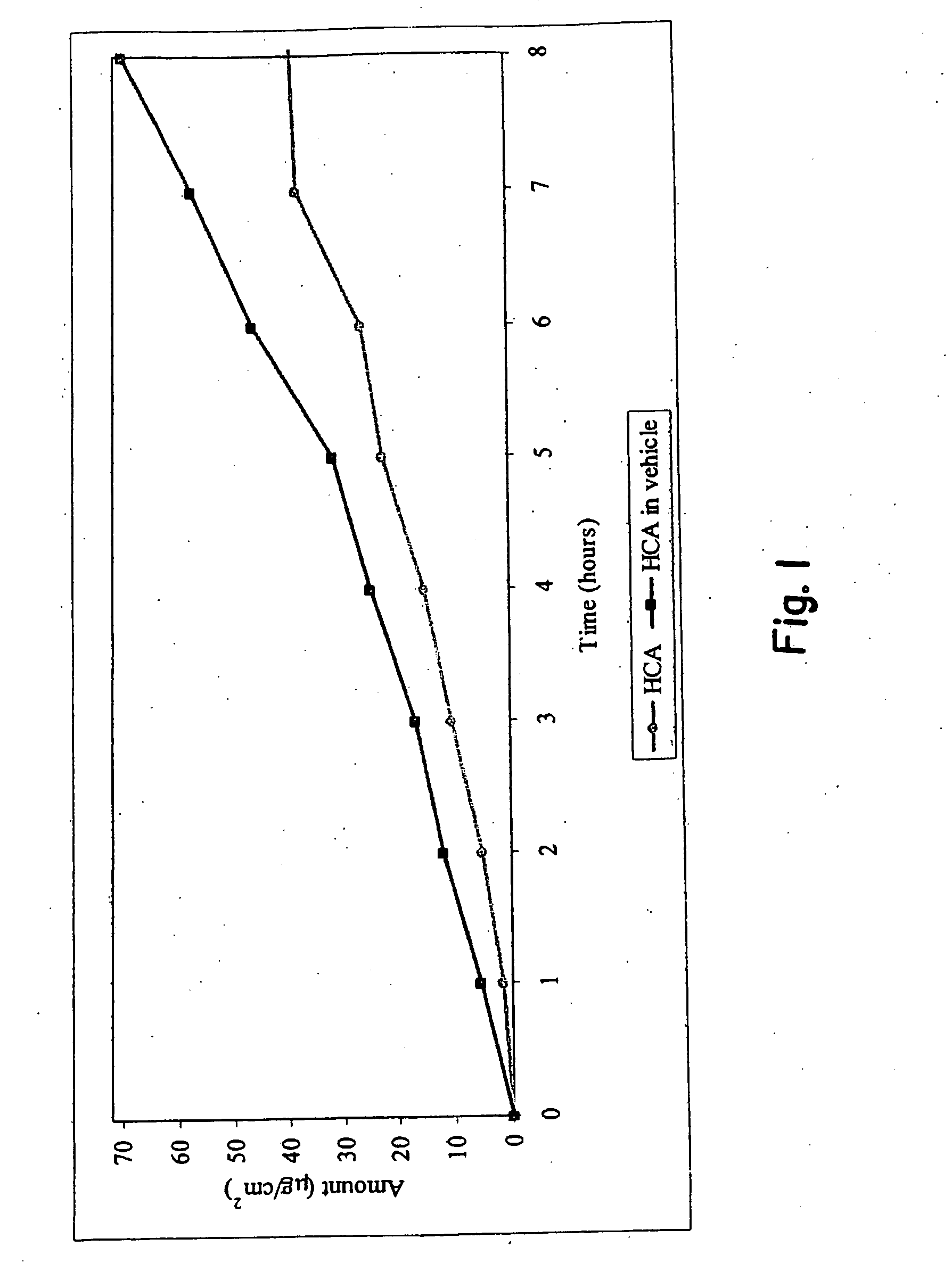Composition and Method For Treating Hyperpigmented Skin
a technology of hyperpigmentation and composition, applied in the field of composition, can solve the problems of hyperpigmentation having a profound negative impact on the social, emotional and psychological well-being of individuals, affecting the effect of hca on skin, and often limited administration of active ingredients, so as to achieve efficient and efficacious application of hca to the skin, lighten dark skin
- Summary
- Abstract
- Description
- Claims
- Application Information
AI Technical Summary
Benefits of technology
Problems solved by technology
Method used
Image
Examples
Embodiment Construction
[0032]An agent for treating hyperpigmentation often acts by inhibiting the biosynthesis of melanins. One example is to inhibit tyrosinase activity, and thereby preclude conversion of tyrosine to melanin. A number of tyrosinase inhibitors are known, and some have been used to treat hyperpigmentation, i.e., to lighten skin.
[0033]Among the most potent tyrosinase inhibitors are the HCAs, which also are nontoxic and nonirritating. Some HCAs, like p-hydroxycinnamic acid (p-HCA), can be found in fruits and vegetables, and presently are being used in the food industry as antioxidants.
[0034]p-Hydroxycinnamic acid is a phenolic cinnamic acid derivative that inhibits the development of cancer, and is found in various plants such as tomatoes, green peppers, carrots, strawberries, and pineapples, as well as herbal plants, like basil and turmeric. p-Hydroxycinnamic acid is activated during digestion and interferes with the development of cancer-causing nitrosamines. p-Hydroxycinnamic acid also is...
PUM
| Property | Measurement | Unit |
|---|---|---|
| temperature | aaaaa | aaaaa |
| wavelength | aaaaa | aaaaa |
| flow rate | aaaaa | aaaaa |
Abstract
Description
Claims
Application Information
 Login to View More
Login to View More - R&D
- Intellectual Property
- Life Sciences
- Materials
- Tech Scout
- Unparalleled Data Quality
- Higher Quality Content
- 60% Fewer Hallucinations
Browse by: Latest US Patents, China's latest patents, Technical Efficacy Thesaurus, Application Domain, Technology Topic, Popular Technical Reports.
© 2025 PatSnap. All rights reserved.Legal|Privacy policy|Modern Slavery Act Transparency Statement|Sitemap|About US| Contact US: help@patsnap.com



